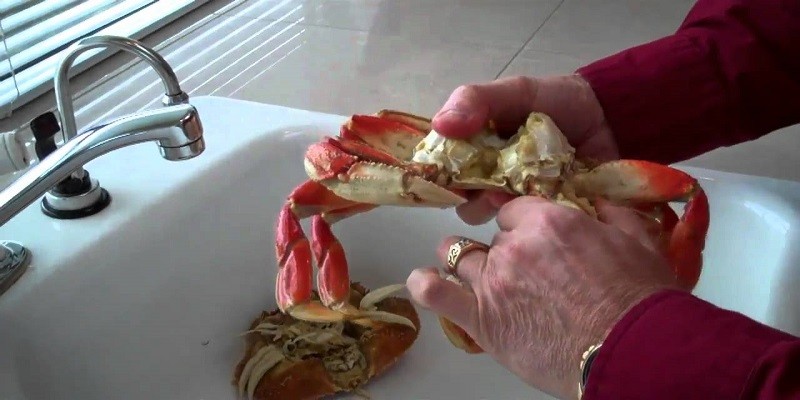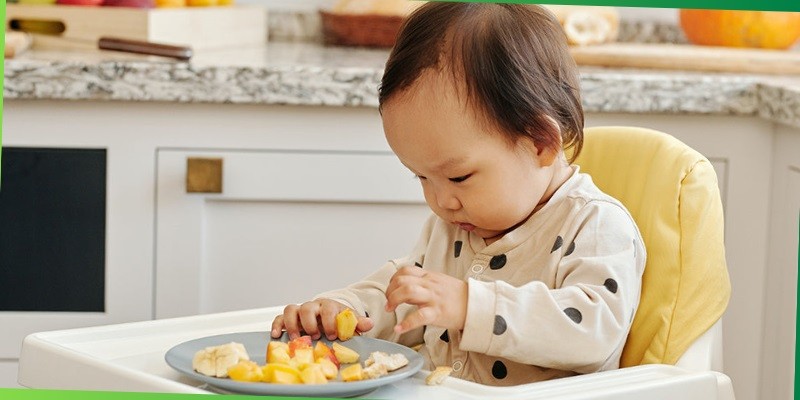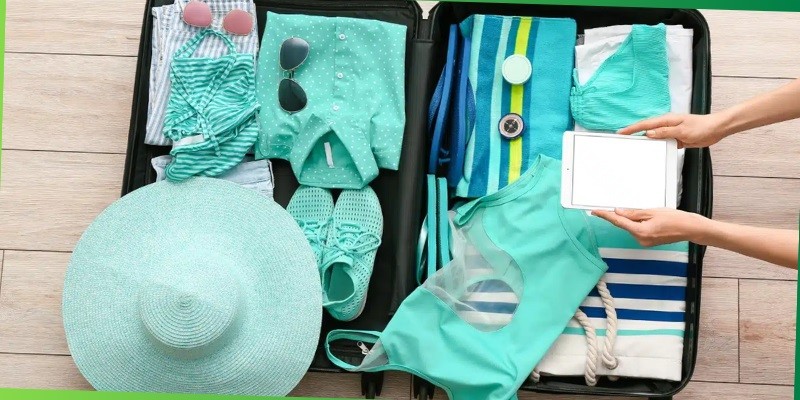Last Updated on October 22, 2023
To clean crab, begin by removing the top shell and gills, then rinse the body thoroughly. In order to safely consume crab, it is important to properly clean and prepare it.
The process involves removing the top shell, known as the carapace, and the gills, also called feathery lungs. This is done to ensure that the crab’s body is free from any impurities or toxins. After removing the top shell and gills, the crab should be rinsed thoroughly to wash away any remaining debris.
By following these steps, you can clean a crab and prepare it for cooking or serving in a safe and hygienic manner.
:max_bytes(150000):strip_icc()/CrabGillsRemoved-5a161efde258f8003beafd82.jpg)
Credit: www.thespruceeats.com
Tools And Preparation
To clean a crab properly, you’ll need essential tools like a sharp knife, seafood crackers, and small brushes. Prepare by having a large pot of boiling water ready and some ice water for cooling afterwards.
Crab is a delicious and versatile seafood that can be enjoyed in a variety of dishes. But before you can indulge in its flavors, you need to know how to clean crab properly. In this blog post, we will guide you through the process, starting with the tools and preparation required.
Safety Precautions For Handling Live Crabs:
- Always wear protective gloves to avoid getting pinched or injured by the crab’s sharp claws.
- Use a sturdy pair of tongs or a crab clamp to securely grip the crab.
- Handle live crabs with care, keeping them away from your face to prevent any accidental nips.
- If you’re unsure about how to handle a live crab, it’s best to seek guidance from an experienced individual or professional.
Essential Tools Needed For Cleaning Crab:
- Crab trap or pot: To catch live crabs if you’re going crabbing in the wild.
- Sharp knife: For cutting and dissecting the crab.
- Kitchen shears: Useful for cutting through the crab’s hard shell.
- Cutting board: Provides a stable surface to work on and protects your countertop.
- Bowl or container: To collect the discarded shells and other waste.
- Water source: Ideally, a sink with running water for rinsing the crab.
Setting Up A Proper Workspace For Cleaning Crab:
- Ensure you have ample space to work comfortably and freely without any obstructions.
- Place a damp cloth or paper towels on your work surface to prevent the crab from slipping.
- Have all your tools within reach, making the cleaning process more efficient.
- Keep a garbage bag nearby to dispose of the waste, making cleaning up easier later.
- Maintain a clean and organized workspace to uphold hygiene standards.
Now that you have the necessary tools and workspace set up, you’re ready to dive into the cleaning process. Remember, following proper cleaning techniques ensures that you can enjoy the succulent meat of the crab without any hassle. Stay tuned for the next section where we will walk you through the step-by-step process of cleaning a crab.
Steps For Cleaning Crab
Learn the proper steps for cleaning crab with these practical guidelines. Discover how to clean crab effectively by following these easy-to-understand and unique instructions.
Step 1: Preparing The Crab For Cleaning
Before you can clean a crab, you need to prepare it properly. Follow these steps to get started:
- Fill a large pot with water and bring it to a boil.
- Once the water is boiling, add salt to taste. The salt helps to season the crab as it cooks.
- Carefully add the live crab to the pot, making sure to avoid any contact with the sharp claws.
- Allow the crab to cook for about 15 minutes. The shells will turn a vibrant red color when they are done.
- Using tongs or a slotted spoon, carefully remove the crab from the pot and place it on a tray or cutting board. Let it cool for a few minutes before you start cleaning.
Step 2: Removing The Top Shell (Carapace) Of The Crab
Now that the crab is ready, it’s time to remove the top shell, also known as the carapace. Follow these steps:
- Hold the crab firmly with one hand, placing your thumb on the underside of the crab.
- With your other hand, grab the top shell and gently lift it away from the body.
- Wiggle the shell from side to side until it releases from the body completely.
- Set the shell aside, as you will discard it later.
Step 3: Cleaning And Removing The Gills
Once the top shell is removed, you will need to clean the crab and remove the gills. Here’s how:
- Rinse the crab under cold running water to remove any remaining debris.
- Locate the gills, also called the feathery lungs, on either side of the crab’s body.
- Use your fingers or a small brush to carefully scrape and remove the gills.
- Rinse the crab again to ensure that all the gills have been removed.
Step 4: Removing The Abdomen And Digestive Tract
Next, you will remove the abdomen and digestive tract of the crab. Follow these steps:
- Turn the crab upside down so that the belly is facing up.
- Locate the triangular-shaped abdomen, also known as the apron, on the underside of the crab.
- Hold the abdomen firmly and gently lift it away from the body.
- Discard the abdomen and any visible digestive tract.
Step 5: Cleaning And Rinsing The Crab Meat
Now that you have removed the top shell, gills, abdomen, and digestive tract, it’s time to clean and rinse the crab meat. Here’s what to do:
- Rinse the crab under cold running water once again to remove any remaining debris or unwanted bits.
- Use a small brush or your fingers to gently clean the crab meat, removing any impurities or stubborn particles.
- Continue rinsing until the crab meat is clean and free from any visible dirt.
Step 6: Breaking The Crab Into Sections For Serving
Lastly, you will break the crab into sections for serving. Here’s how to do it:
- Hold the crab firmly with one hand.
- Use your other hand to separate the crab into sections by carefully cracking the largest sections of the legs and claws at the joints.
- Continue breaking the crab into smaller sections, making sure to crack the shell to access the succulent meat inside.
- Repeat the process for each leg and claw section until the entire crab is in manageable pieces.
Now that you have successfully cleaned the crab and divided it into sections, you are ready to enjoy the delicious meat it has to offer.
Tips For Efficient Cleaning
Discover effective tips to efficiently clean crabs with ease. From properly removing the shell to cleaning the meat, these step-by-step instructions will ensure a hassle-free cleaning process.
Cleaning crab can be a messy and time-consuming task, but with the right techniques, you can ensure a more efficient process. Here are some tips to help you maximize the use of crab meat, avoid common cleaning mistakes, maintain proper hygiene, and make the most of leftover crab shells:
Maximizing The Use Of Crab Meat:
- Remove the crab legs first by twisting them off at the joints. Gently crack the shells, using a crab cracker or the back of a knife, to extract the meat without damaging it.
- Don’t forget about the claw meat! Use a seafood pick or a small fork to carefully remove the meat from the claw shells.
- After cleaning the legs and claws, work on the body. Gently pry open the shell and remove the gills and innards, discarding them. Extract the delicate lump meat from the body cavity, being cautious not to break it up too much.
Avoiding Common Mistakes During The Cleaning Process:
- Don’t rush the cleaning process. Take your time to avoid any accidental injuries and ensure that you extract every bit of delicious meat.
- Avoid applying excessive force when cracking the crab shells to prevent crushing the meat. Use a controlled and gentle approach.
- Be cautious when removing the meat from the body shell to avoid any fragments of shell ending up in your final dish.
Ensuring Proper Hygiene During Cleaning:
- Wash your hands with soap and water thoroughly before and after handling crabs, as they can harbor bacteria.
- Clean all utensils, cutting boards, and surfaces that come into contact with raw crab meat to prevent cross-contamination.
- Ensure that the crab is fresh and free of any off-putting odor or discoloration. If in doubt, it’s better to discard it than risk foodborne illnesses.
Proper Storage And Use Of Leftover Crab Shells:
- Rather than throwing away the crab shells, consider using them to make a flavorful seafood stock. Simply simmer the shells with water, vegetables, and herbs to extract their essence for soups, stews, or seafood-based sauces.
- Another option is to crush the crab shells and add them to your garden soil as a natural source of calcium and minerals.
- If you have excess crab shells, seal them in a plastic bag and freeze them until garbage collection day to prevent any unpleasant odor in your home.
By following these tips, you can efficiently clean crabs, make the most of the delicious meat, avoid common cleaning mistakes, maintain proper hygiene, and even find creative uses for leftover shells. Enjoy the process and savor the sweet rewards of your efforts!
Cooking And Serving Suggestions
Discover simple and effective techniques to clean crabs in preparation for cooking and serving. Learn the step-by-step process for effortlessly removing shells and ensuring a delicious and satisfying seafood feast.
Delicious recipes for cooked crab meat:
- Crab cakes: A classic dish that showcases the sweet and delicate flavor of crab meat. Combine cooked crab meat with breadcrumbs, egg, mayonnaise, dijon mustard, and seasoning. Shape into patties and pan-fry until golden brown.
- Crab alfredo: Elevate your pasta game with a rich and creamy crab alfredo sauce. Sauté garlic in butter, add cooked crab meat, heavy cream, parmesan cheese, and seasonings. Toss with cooked fettuccine and garnish with parsley.
- Crab salad: A refreshing and light option, crab salad is perfect for hot summer days. Mix cooked crab meat with diced celery, red onion, mayo, lemon juice, and a touch of old bay seasoning. Serve on a bed of lettuce or as a filling for sandwiches.
Pairing crab with complementary ingredients and flavors:
- Butter and lemon: The classic combination of melted butter and tangy lemon brings out the natural sweetness of crab meat. Drizzle it over steamed or grilled crab legs for a simple yet delicious flavor enhancement.
- Garlic and herbs: Enhance the savory notes of crab by adding minced garlic, fresh herbs like parsley or dill, and a hint of lemon zest. Whether you’re sautéing crab meat or making a dipping sauce, these flavors will complement it beautifully.
- Sweet and spicy: For a taste sensation, pair crab with a sweet and spicy sauce. Mix honey, soy sauce, rice vinegar, and a pinch of red pepper flakes for a glaze that will add a delightful kick to your crab dishes.
Serving suggestions for an impressive presentation:
- Crab stuffed mushrooms: Fill large mushroom caps with a mixture of cooked crab meat, cream cheese, breadcrumbs, and herbs. Bake until the mushrooms are tender and the filling is golden and bubbly.
- Crab bisque: Serve a velvety crab bisque in elegant bowls garnished with a dollop of sour cream and a sprinkle of fresh chives. This creamy and flavorful soup is sure to impress your guests.
- Crab tower: Layer cooked crab meat, diced avocado, and diced tomatoes in a ring mold to create a visually stunning crab tower. Carefully remove the mold and drizzle with a zesty dressing for a show-stopping appetizer.
Tips for cracking and enjoying crab legs:
- Use a crab cracker or kitchen shears to crack the sturdy shells of crab legs. Begin by cracking the joints and then carefully extract the succulent meat from the shell.
- Serve the crab legs with melted butter and lemon wedges for dipping. The combination of the rich butter and tangy lemon enhances the delicate flavor of the crab meat.
- Enjoy the sweet and tender crab meat straight from the shell or use it in various recipes like crab cakes, pasta dishes, or salads.
Remember, cooking and serving crab is all about enjoying the delicious flavors and savoring every bite. Get creative in the kitchen and explore different recipes and pairings. With these tips, you’ll be well-prepared to clean crab, cook it to perfection, and serve it in impressive ways.
Frequently Asked Questions On How To Clean Crab?
How Do You Clean A Crab?
To clean a crab, start by removing the apron and gills. Crack open the shell and remove the meat. Rinse and pat it dry before cooking.
What’S The Best Way To Clean A Live Crab?
The best way to clean a live crab is to first place it in the freezer for a few minutes to numb it. Then, quickly twist off the top shell, scoop out the insides, and rinse.
Can You Eat The Feathery Part Of The Crab?
No, you can’t eat the feathery part of the crab. Known as the gills, they are not edible and should be removed before cooking and consuming the crab.
Do You Need To Cook A Crab Before Cleaning It?
Yes, you should cook the crab before cleaning it. Cooking not only helps kill any potential bacteria, but also makes it easier to remove the shell and clean the crab.
How Do You Remove The Crab Meat From The Shell?
To remove the crab meat from the shell, use a crab cracker or mallet to crack the shell. Then, gently extract the meat using a fork or your fingers.
Conclusion
Cleaning crabs can be a daunting task, but with these step-by-step instructions, you can become a pro. By following the guidelines of properly preparing and cleaning crabs, you can enhance the flavor and experience of this delightful seafood. Begin by selecting fresh and live crabs to ensure the best taste.
Then, handle the crabs carefully and use proper equipment to reduce any potential risk. Next, remove the top shell and clean out the internal organs to eliminate any unwanted flavors. Rinse the crabs thoroughly with clean water and pat them dry before cooking.
Lastly, store any leftover cleaned crabs properly to maintain their freshness. By mastering the art of cleaning crabs, you can unlock a world of delicious possibilities. So, roll up your sleeves, put on your apron, and get ready to enjoy a tasty crab feast like never before!










